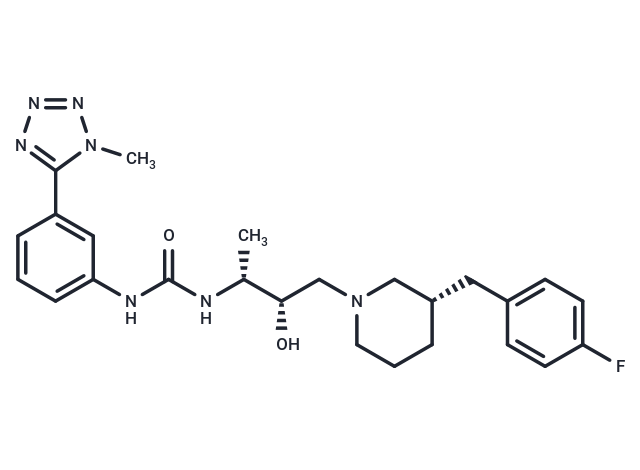Powder: -20°C for 3 years | In solvent: -80°C for 1 year


BMS-639623 is a CCR3 antagonist with a picomolar inhibitory effect on eosinophilic chemotaxis and can be used in the treatment of asthma.

| Pack Size | Availability | Price/USD | Quantity |
|---|---|---|---|
| 25 mg | 8-10 weeks | $ 2,120.00 | |
| 50 mg | 8-10 weeks | $ 2,780.00 | |
| 100 mg | 8-10 weeks | $ 3,700.00 |
| Description | BMS-639623 is a CCR3 antagonist with a picomolar inhibitory effect on eosinophilic chemotaxis and can be used in the treatment of asthma. |
| Targets&IC50 | CCR3:0.3 nM (IC50) |
| Synonyms | UNII-PON9OFP69G, PON9OFP69G, BMS 639623, CHEMBL399495 |
| Molecular Weight | 481.57 |
| Formula | C25H32FN7O2 |
| CAS No. | 675122-44-8 |
Powder: -20°C for 3 years | In solvent: -80°C for 1 year
You can also refer to dose conversion for different animals. More
bottom
Please see Inhibitor Handling Instructions for more frequently ask questions. Topics include: how to prepare stock solutions, how to store products, and cautions on cell-based assays & animal experiments, etc.
BMS-639623 675122-44-8 CHEMBL 399495 UNII-PON9OFP69G PON9OFP69G BMS639623 BMS 639623 CHEMBL-399495 CHEMBL399495 inhibitor inhibit
